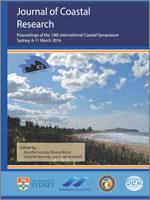Tin, H.; Garcia, R.; O'Leary, M., and Fotedar, R., 2016. Identification and Mapping of Marine Submerged Aquatic Vegetation in Shallow Coastal Waters with WorldView-2 Satellite Data. In: Vila-Concejo, A.; Bruce, E.; Kennedy, D.M., and McCarroll, R.J. (eds.), Proceedings of the 14th International Coastal Symposium (Sydney, Australia). Journal of Coastal Research, Special Issue, No. 75, pp. 1287 - 1291. Coconut Creek (Florida), ISSN 0749-0208.
Marine submerged aquatic vegetation (MSAV) naturally occurs on rubble and dead coral substrates in temperate and tropical coastal regions. During the growing season, MSAV develops to form dense canopy seaweed beds that play a vital role in coastal marine ecosystems and offer great potential to chemical, pharmaceutical, and bio-energy industries. At present, the total biomass and the distribution of the MSAV beds along the coast of Western Australia (WA) are not fully identified and quantified. Therefore, the application of satellite remote sensing data with high spatial resolution for examining the MSAV beds is required. The main objective of the present study was to assess and map the distribution of MSAV at two sites; Rottnest Island and Point Peron, Rockingham, WA, using WorldView-2 (WV2) satellite data. These study sites are important marine protected areas in WA waters with extraordinary documented biodiversity. By means of quantitative quadrat techniques, the MSAV canopy covers and fresh biomass data from the ground truth observations were assessed from September 2012 to December 2014. At Point Peron, the fresh biomass of Sargassum in the inter-tidal zone reached 5651.7±754.5, 5218.9±192.6, 1136.6±526.4, and 3472.2±434.2 g m−2 for spring, summer, fall, and winter, respectively. The overall accuracy of the minimum distance method was employed and yielded the highest accuracy rates of 90.93% (Kappa coefficient, κ = 0.96) and 97.13% (κ = 0.96) for Rottnest Island and Point Peron, respectively. The Mahalanobis classification with overall accuracy yielded 90.66% (κ = 0.88) and 94.16% (κ = 0.85) for Rottnest Island and Point Peron, respectively. The study results revealed that WV2 satellite data provided evidence of the high accuracy of MSAV classification.





